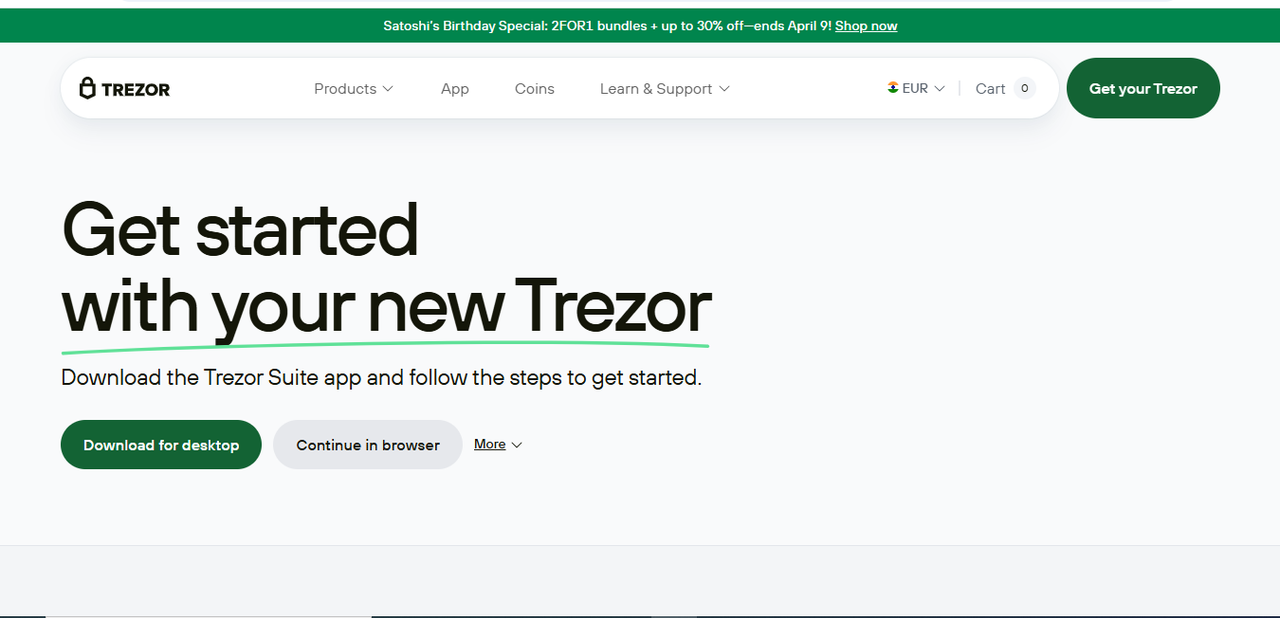Trezor Login
Understanding Trezor Login is essential for securely accessing and managing your cryptocurrency assets through a Trezor hardware wallet. Whether you're using Trezor Model One or Trezor Model T, the Trezor Login process ensures you're in full control of your private keys and funds.
Why Trezor Login Matters
The Trezor Login method offers a high level of protection against phishing, malware, and unauthorized access. Unlike software wallets, Trezor Login requires physical confirmation on the device itself, adding a crucial layer of security to all transactions and authentications.
How Trezor Login Works
The Trezor Login process begins when you connect your Trezor device to your computer or mobile phone via USB. You’ll then open the Trezor Suite or web wallet, which will prompt you for Trezor Login by verifying your PIN and, optionally, a passphrase. This confirms your identity before granting access to wallet functions.
Trezor Login With Trezor Suite
Using Trezor Suite for Trezor Login provides a seamless experience with added privacy and functionality. The desktop application simplifies Trezor Login by recognizing your device, guiding you through the PIN entry on the Trezor screen, and enabling features like portfolio tracking, Tor routing, and coin management.
- Trezor Login via Trezor Suite supports over 1,000 coins.
- Trezor Login protects your wallet with multi-factor authentication.
- Trezor Login keeps your seed phrase offline and secure.
Trezor Login and Browser Access
If you prefer using a browser, Trezor Login is also possible via the web wallet at suite.trezor.io/web. Trezor Bridge or WebUSB is required to facilitate secure Trezor Login from your browser, enabling access to your wallet without compromising safety.
Security Features of Trezor Login
One of the biggest advantages of Trezor Login is the built-in hardware verification process. You never enter your seed or PIN on your computer—only on the device screen—making Trezor Login resistant to keyloggers, screen scrapers, and malware-based threats.
- Trezor Login uses PIN protection to prevent unauthorized access.
- Trezor Login supports optional passphrases for advanced security.
- Trezor Login requires physical confirmation of all actions.
Trezor Login and Third-Party Apps
Trezor Login can also be used with third-party wallets and platforms like MetaMask, Electrum, and MyEtherWallet. When connected, these apps prompt you to complete Trezor Login before granting wallet access, ensuring your credentials remain under hardware-level protection.
Troubleshooting Trezor Login Issues
If you encounter problems during Trezor Login, check for outdated firmware, USB connectivity issues, or conflicts with browser extensions. Reinstalling Trezor Bridge or switching from web to Trezor Suite may resolve common Trezor Login errors like device not detected or connection failed.
Trezor Login Best Practices
To maintain the highest level of security during Trezor Login, always ensure you're on an official Trezor domain and avoid clicking unknown links. Never share your PIN, recovery seed, or passphrase. Regularly updating your firmware ensures that your Trezor Login process uses the latest security patches.
- Bookmark the official site for Trezor Login to avoid phishing.
- Enable passphrase encryption to enhance Trezor Login security.
- Keep your Trezor firmware updated for the most secure Trezor Login experience.
Final Thoughts on Trezor Login
Mastering the Trezor Login process is essential for anyone who values self-custody and digital asset security. From device authentication to transaction signing, every step of Trezor Login reinforces your control and privacy. Whether you access your wallet through Suite, browser, or third-party tools, understanding Trezor Login gives you peace of mind and full control over your crypto assets.
